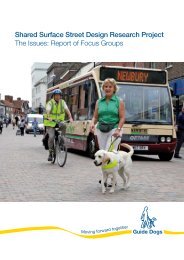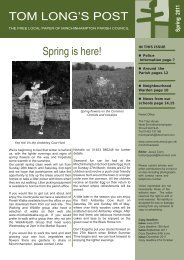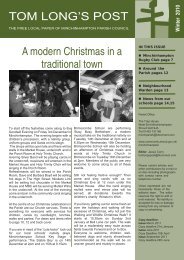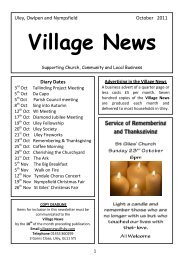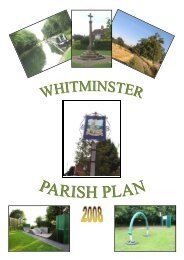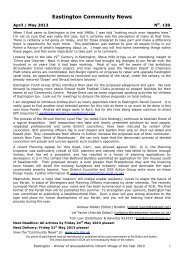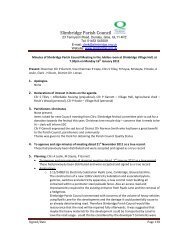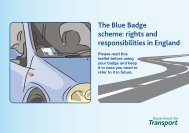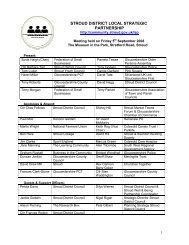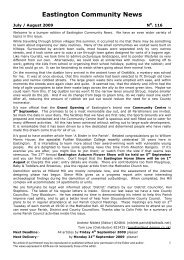An Historical Introduction to Minchinhampton
An Historical Introduction to Minchinhampton
An Historical Introduction to Minchinhampton
You also want an ePaper? Increase the reach of your titles
YUMPU automatically turns print PDFs into web optimized ePapers that Google loves.
Minchinhamp<strong>to</strong>n Common was beginning <strong>to</strong> assume its role for recreation, in addition <strong>to</strong> that ofcommon farmland. In Vic<strong>to</strong>rian times the duty of administering the common pasture was graduallyassumed by a Committee of Commoners, which kept detailed minutes throughout the C19 th . Theywere concerned for their cattle, and damage of any sort <strong>to</strong> the turf brought an immediate response.In 1847 James Harrison of Littleworth was threatened with prosecution for “injuring a s<strong>to</strong>netrough”. It had previously been reported that the weather had been so unusual that all the pools onthe commons had dried, and water for the beasts was only obtained with great difficulty. Otherissues tackled were taking land in<strong>to</strong> the Common, dealing with straying cattle and with thequarries. There were two large areas of arable land left, one <strong>to</strong> the north of Box and the otherstretching in a broad arc northwards from the windmill. When an occupier of land wished <strong>to</strong>straighten his boundary or enlarge his garden permission was granted provided he threw in<strong>to</strong> thecommon as large, or a larger piece of ground. Mrs. Frith made the road from the Halfway House <strong>to</strong>Tom Longs Post, in return for taking in 3½ acres of common land in<strong>to</strong> the grounds of Highlands,now Beaudesert School. Near Windmill House the footings of the original wall of the field atCharity Barn can be seen.Cricket was played on Minchinhamp<strong>to</strong>n Common, near <strong>to</strong> the windmill although conditions werefar from ideal, a match between Nailsworth and Minchinhamp<strong>to</strong>n yielding a score of visi<strong>to</strong>rs 26,home team 86! There would be a mown strip, as the early accounts of this local M.C.C. indicate,but this would not have been rolled, and "bouncers" would catch many experienced batsmenunawares. The open land was undoubtedly the scene of many local sporting events, from football <strong>to</strong>horse racing, and the area by Dr. Brown’s Road, then part of Burleigh Lane, was regularly used formilitary gatherings and manoeuvres, thus acquiring the name Camp Field; a copse of trees and aflagstaff marked the centre of the parade area. As the Ricardo family lived at Gatcombe, their oldpark had become somewhat of a public open space, although it was never part of Minchinhamp<strong>to</strong>nCommon, with all the rights that entailed. Along the northern boundary of the Great Park was awall and ditch with entrance gateways or arches, still visible in the line of brambles <strong>to</strong>day. Closer <strong>to</strong>the schools, on a concrete plinth, there s<strong>to</strong>od a large gun that might have been captured from theRussians in the Crimean War. Certainly two cannon from the Siege of Sebas<strong>to</strong>pol were erected infront of the Subscription Rooms in Stroud. Nailsworth, <strong>to</strong>o, was presented with a gun but they put i<strong>to</strong>ut of sight possibly “<strong>to</strong> intimate the great blessing it would be <strong>to</strong> mankind if all the warlikeinstruments in the world lay as peaceful and quiet as theirs”.11 This poses a question: at that timeNailsworth was not a parish in its own right, but part of Minchinhamp<strong>to</strong>n, so was this the gun thateventually ended up here?



